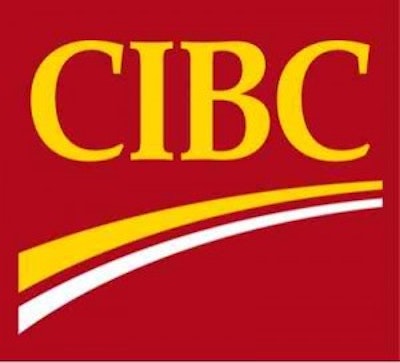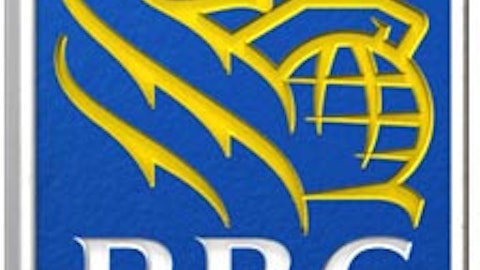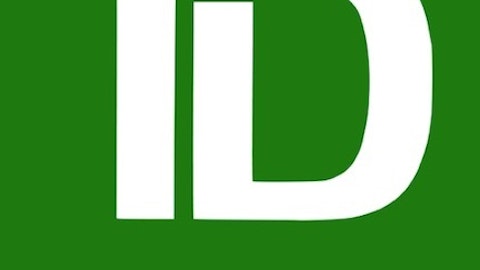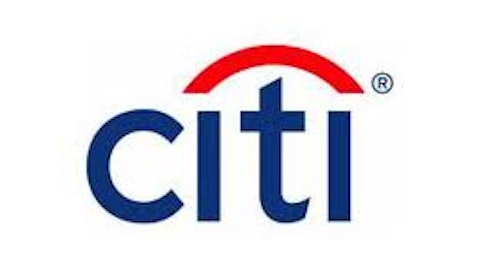My coverage of the Canadian banking sector continues, as this time around, I will be deeply evaluating the the Canadian Imperial Bank of Commerce (USA) (NYSE:CM), commonly known as the CIBC, and what makes it a worthwhile investment.

CIBC is an interesting choice for an investment. The bank possesses robust fundamentals and primarily operates in Canada, which claims to offer one of the safest financial infrastructures in the world.
The two strategic business units, Canadian Imperial Bank of Commerce (USA) (NYSE:CM) world markets and CIBC retail markets, have presence across the United States, Asia and some parts of Europe. Globally, CIBC serves more than 11 million customers with approximately 40,000 employees. It should be noted that Bloomberg’s Markets magazine named CIBC, as the strongest bank in North America and the third-strongest bank in the world.
Let’s examine the financials of the company in order to establish if it makes a worthwhile investment option.
Snapshot of the financials
Canadian Imperial Bank of Commerce (USA) (NYSE:CM) posted strong second-quarter results, as net income grew 8% year-over-year to $876 million. CIBC’s Basel III Common Equity Tier 1 ratio on April 30 stood at 9.7%. The Tier 1 capital ratio and total capital ratio stood at 12.2% and 15.5%, respectively.
When compared to a Basel III Common Equity Tier 1 ratio of 9.6%, a Tier 1 capital ratio of 12.0% and a total capital ratio of 15.3% in the previous quarter are indicative of its initiative to successfully manage its capital requirements, leverage ratio and liquidity requirements..
Furthermore, the bank reported strong growth in all of its core business verticals. Retail and business banking reported net income of $604 million during the second quarter, which is a 9% increase from same quarter in the previous year. The wealth-management business also posted strong performance clocking 16% year-over-year growth.
Wholesale banking was one of the best performing verticals, as the company reported revenue of $580 million, which is up 3% from the previous quarter. The growth witnessed was predominantly due to higher revenue in the structured credit run-off business and the U.S. real estate finance.
Strategic acquisitions to spur growth
Other than posting strong organic growth, the company is constantly on the lookout for alliances in order to increase its penetration in key segments.
In a bid to further penetrate the wealth-management vertical and expand its presence across the U.S. market, the bank acquired Atlantic Trust Private Wealth Management from Invesco for $210 million.
The acquisition is one of many made by the bank in the wealth-management segment. The company recently acquired MFS McLean Budden’s private wealth business, in addition to acquiring 41% stake in American Century Investments for $848 million during 2011.
Competitive landscape
The Canadian banking industry is certainly recognized as one of the world’s safest, however it also a highly competitive sector. CIBC faces stiff competition from banks such as, Toronto-Dominion Bank (USA) (NYSE:TD) and The Bank of Nova Scotia (USA) (NYSE:BNS). Other than these mega players, it also faces competition from smaller domestic banks present across the Canadian banking landscape.
Toronto-Dominion Bank (USA) (NYSE:TD) held the coveted AAA rating by global rating agency Moody’s for long-term deposits until recently when Toronto-Dominion Bank (USA) (NYSE:TD) along with five other Canadian banks were downgraded. The downgrade made by Moody’s was predominantly due to severe pressure on the Canadian economy through high levels of consumer debt and rapidly increasing housing prices.
During the third quarter of the previous fiscal, Canadian consumer debt escalated to a whopping 165% of disposable income, compared to which the consumer debt of disposable income stood at 137% during 2007.
In spite of the downgrade, Toronto-Dominion Bank (USA) (NYSE:TD) still remains one of the safest banks in the world carrying a rating of Aa1 and it will be continued to be favored by the investors.
The bank posted impressive results during the second quarter of 2013 with 6% year-over-year growth in earnings amounting to a whopping $1.8 billion.
Apart from rapid growth in all segments, the bank is fairly active in seeking alliances, which is strategically inline with its overall long-term growth strategy.
It acquired Target’s credit-card business for over $5 billion and US-based Epoch in a bid to increase its presence in the U.S market and establish itself as a significant player in North America. I continue to keep a bullish outlook on its stock.
Bank of Nova Scotia is another big player in the Canadian market.The bank posted promising numbers in all segments, as the the second quarter exhibited double- digit growth both in terms of revenue and earnings.
Overall, the company clocked impressive 12% growth in revenue and 15% growth in earnings. Similar to its peers, Bank of Nova Scotia is actively seeking alliances in order to expand its footprint through the inorganic route.
The bank recently acquired the Canadian operations of ING for a massive $3.1 billion, one the largest acquisitions in its 180 year history, making it the third largest bank by deposits in Canada.
At present, the bank is only focusing on further strengthening its position in regions where it already holds a reasonable presence. In a recent interview, Brian Porter, who will take over as Bank of Nova Scotia’s chief executive in November, stated that bank’s credit-card business had solid growth potential within Canada.
He further stressed no plans on expanding the firm’s operations to new territories such as Europe and Africa. Currently, the Bank of Nova Scotia has operations in 55 countries primarily in South America with a consistently growing presence across Asia.
Bank of Nova Scotia is primed to establish itself as a major player in the Canadian market and pose significant competition to CIBC.
So is it a robust investment?
Canadian Imperial Bank of Commerce (USA) (NYSE:CM) is one of the best performing banks not just in North America, but a highly ranked financial institution around the globe.
Like all its peers in the Canadian market, CIBC was recently downgraded due to an unstable economic environment surrounding most financial institutions. However, I believe what makes Canadian Imperial Bank of Commerce (USA) (NYSE:CM) a reliable investment is its ability to successfully maintain the BASEL III CET 1 ratio well above the base requirements, showcasing its overall superior risk-management fundamentals.
In addition, it possesses a neat balance sheet, as the company made noticeable efforts to reduce its debt-to-equity ratio in recent times. In January 2012, the debt-to-equity ratio stood at 4.8, whereas during April the same ratio came down to 1.6. I believe a gradual improvement in the macro-economic environment will result in Canadian Imperial Bank of Commerce (USA) (NYSE:CM)’s stock showing good growth.
Ashit Gulati and Equity Dimensions have no position in any stocks mentioned. The Motley Fool recommends The Bank of Nova Scotia (USA).
The article Is the Canadian Banking Sector Still Reliable? originally appeared on Fool.com.
Copyright © 1995 – 2013 The Motley Fool, LLC. All rights reserved. The Motley Fool has a disclosure policy.



